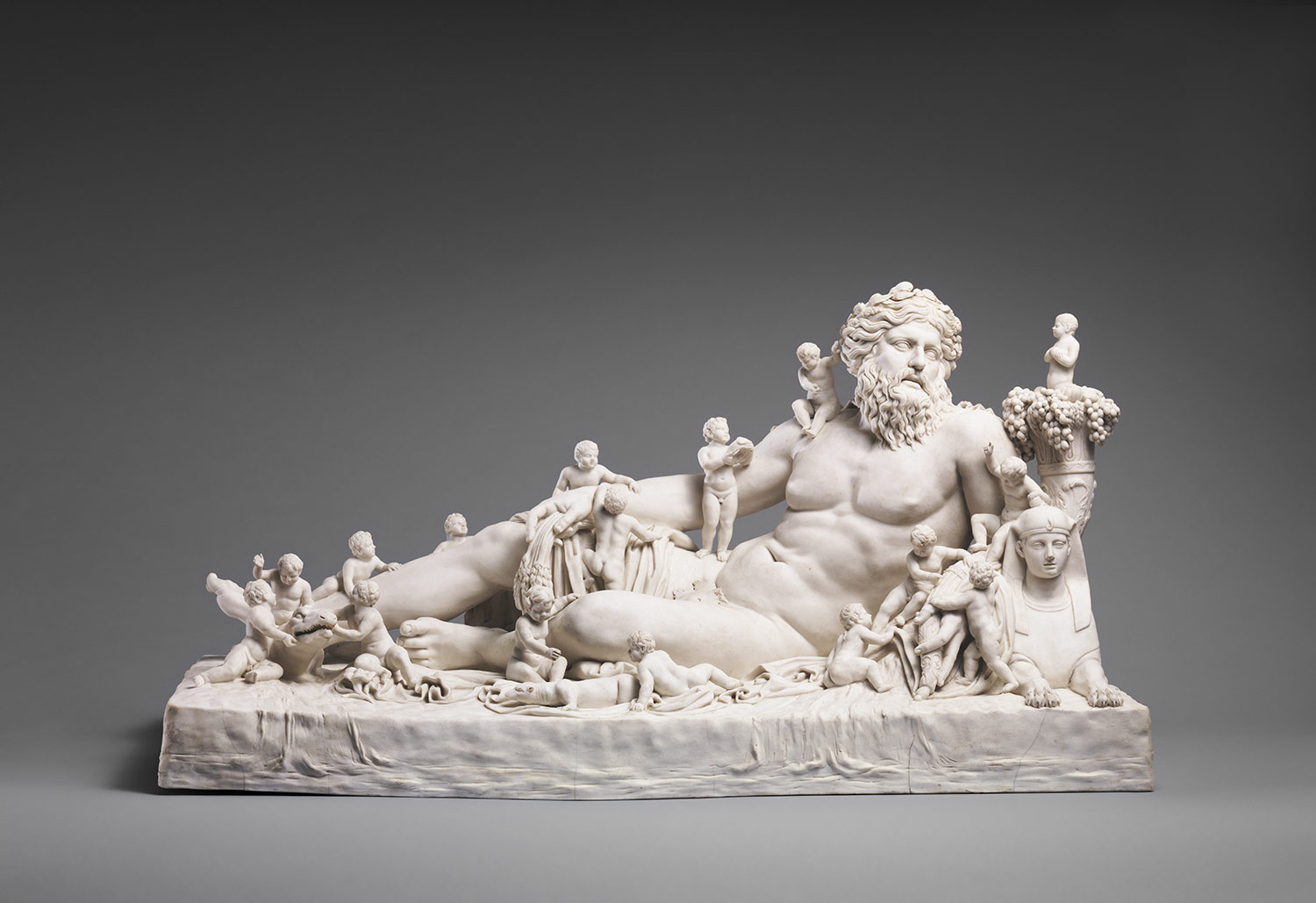
The River Nile, ca. 1740–95
Giovanni Volpato (Italian, ca. 1735–1803)

The Vatican Nile, itself a copy of a Hellenistic statue, probably Alexandrian in origin, was discovered in the early sixteenth century in excavations of the shrine to Isis and Serapis near Santa Maria sopra Minerva in Rome. Pliny the Elder mentions a similar sculpture in ancient Egypt in his Natural History (36.58), explaining that the babies surrounding the river god represent the ideal height of sixteen cubits to which the Nile river rose annually, thereby assuring abundant fertility in Lower Egypt. The Nile's waters, carved as wavy lines and embellished with ibisis, crocodiles, and hippopotami on the Vatican group, are more effectively replaced with wet drapery on the Volpato version due to its smaller size. The Neoclassical flavor of such drapery prefigures its later use by sculptors such as Canova.
The original, a colossal ancient Roman marble sculpture of the Nile, is housed in the Braccio Nuovo at the Vatican.
A cinquecento copy of the Vatican Nile once stood in the stairway at Monserrate. An early item in the Cook Collection, this sculpture once formed part of the Worsley collection. In the same hall there were Flemish Tapestries, Roman Busts, and a large Arabic oil jar.

No comments:
Post a Comment